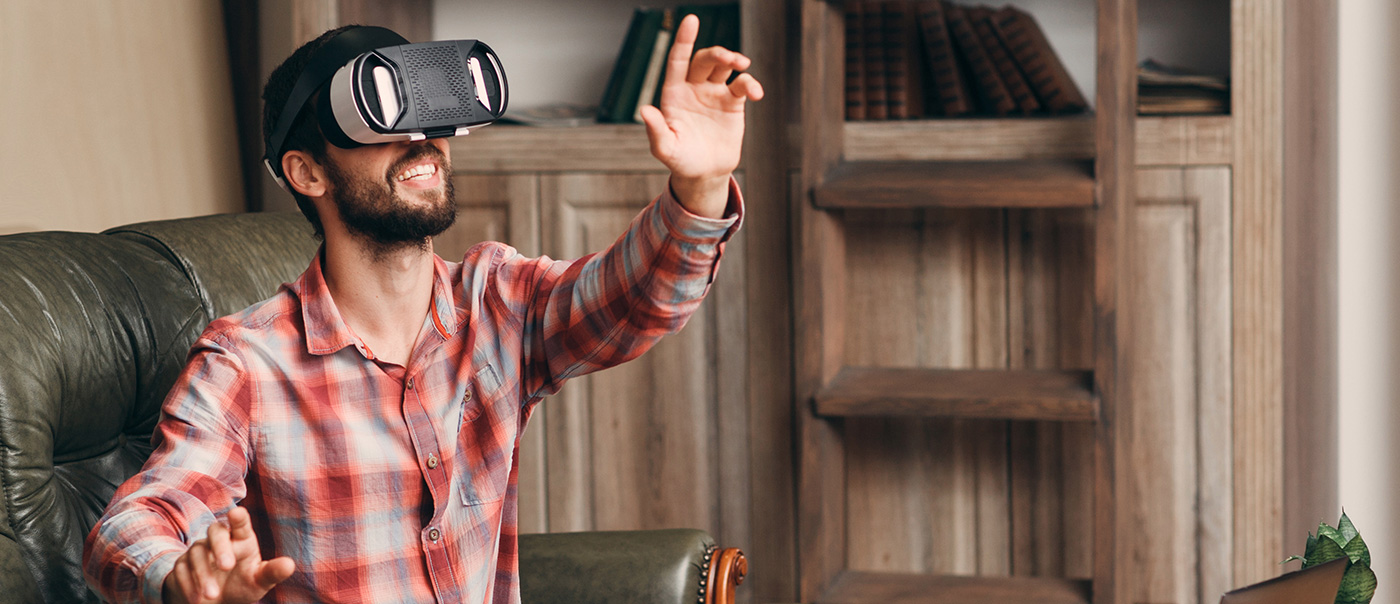Imagine selling a property without ever having to leave the comfort of your office.
Clients enter, put on a headset or a pair of goggles and are instantly transported into a three-dimensional world allowing them to see a floor plan come to life and experience a property without ever setting foot inside. This is virtual reality.
Some industry experts use virtual reality (VR) as a blanket term for all immersive experiences, including augmented reality (AR), 360° photos or videos and mixed reality (MR). But there is a clear difference: VR transports you someplace outside reality, making you feel like you’re virtually there, AR enhances reality rather than changes it (think Pokémon GO or Snapchat lenses) and MR combines the two.
First introduced as a new way to experience video games, VR/AR is now being adopted by many other industries, including real estate. In fact, it’s predicted the technology will reach mass adoption levels by 2021 with more than a billion people worldwide regularly accessing apps and content through VR/AR platforms.
So, how can this technology benefit REALTORS® and their clients? Consider:
- New housing developments where clients are able to walk through their home before it’s built.
- Clients with mobility challenges.
- Clients who may live out of the area, province or even country. REALTOR.ca received 10.5 million international visitors in 2016, alone.
- Millennials or other tech-savvy clients already familiar with the technology.
- The ability to customize a home using virtual commerce (don’t like that outdated kitchen? See what that dream makeover would look like in its place).
With virtual reality, buyers can tour a home in a matter of minutes from anywhere, as long as they have access to a smartphone and one of the many VR products available on the market today. And, thanks to growing demand – it’s estimated worldwide VR/AR headset shipments will hit 100 million by 2021 – head-mounted display (HMD) technology is becoming more accessible and affordable.
| STARTER | INTERMEDIATE | ADVANCED |
| Google Cardboard (from $20) |
Sony PlayStation VR (from $549) |
HTC VIVE (from $1,149) |
| Daydream View (from $99) |
Oculus Rift (from $679) |
|
| Samsung Gear VR (from $199.99) |
Like any new technology and with the endless possibilities, knowing where to start can be daunting. Not to worry, here are a few tips:
- Start by experimenting with 360° photos and videos. Consumers love to see what they’re buying (remember, photographs reign supreme on REALTOR.ca, accounting for more than 150 million views in 2016). Most true VR/AR experiences will need a developer or programmer so 360° is a great entry point for those not yet ready to invest.
- Get to know the potential of VR technology by spending time in an HMD.
- Remember, the focus of any great VR/AR experience should be evoking an emotional response through storytelling.
To most of us, the Internet has always been a source of information. It was created based on logic; very “left-brained.” It seems the Internet of the future is shifting, placing greater emphasis on artistry and creativity. So, when it comes to the possibilities it presents to REALTORS® … you’ll really only need to use your imagination.
Your turn! How do you see incorporating virtual or augmented reality into your own business? Share with us in the Comments section below.





